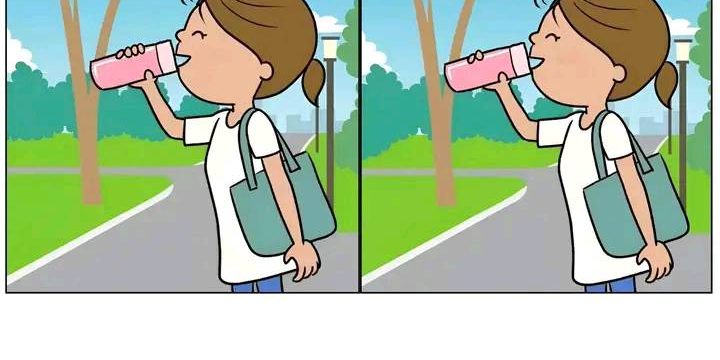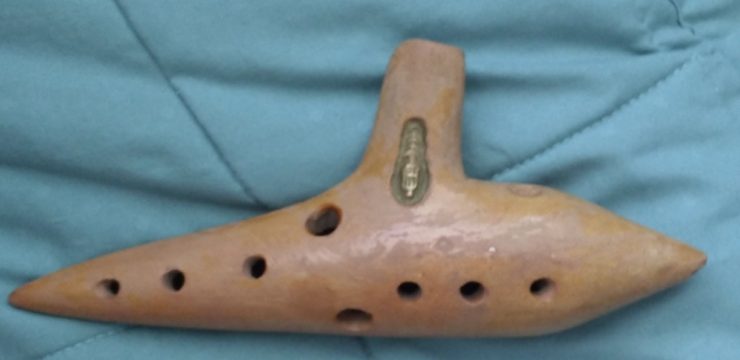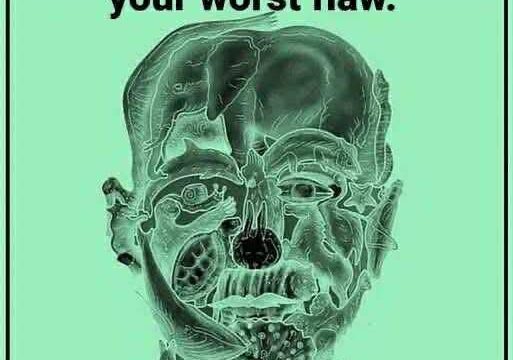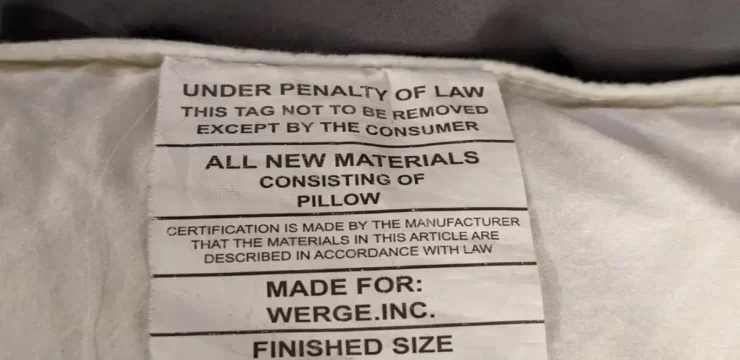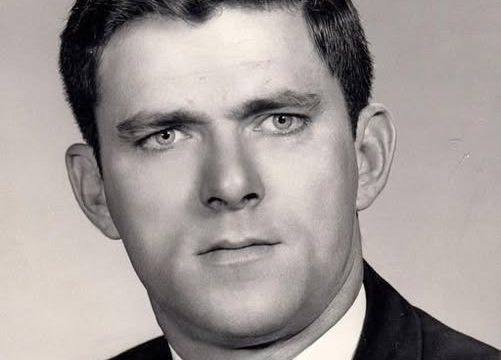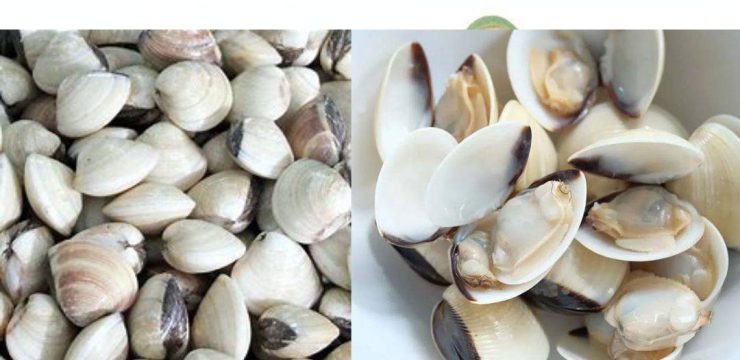Spot-the-difference puzzles may seem like simple entertainment, but they’re actually excellent mental exercises designed to challenge your focus and attention to detail.
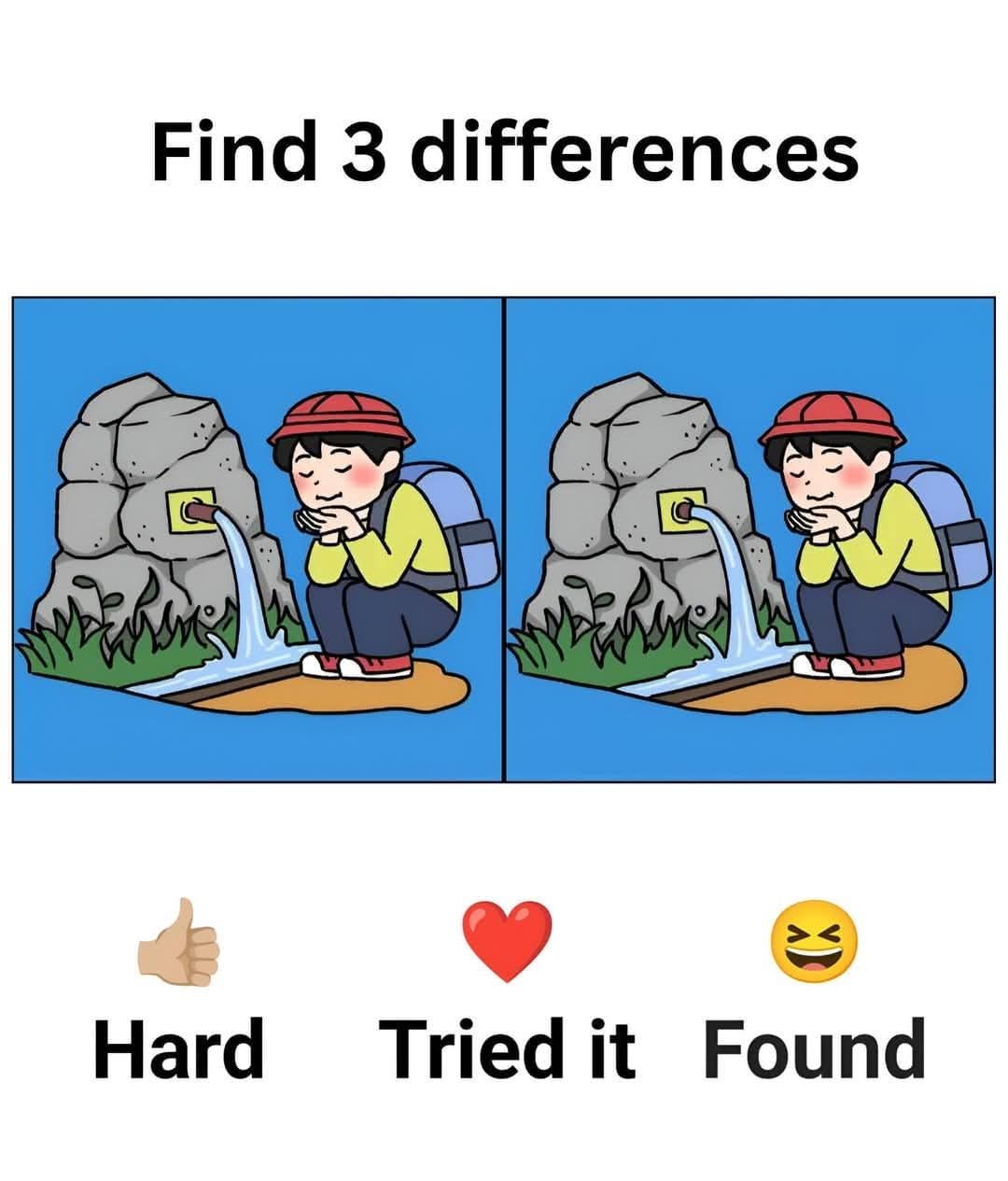
One particular puzzle that has recently gone viral features two nearly identical images of a young boy kneeling beside a stone fountain, drinking fresh water from a mountain spring. At first glance, everything looks exactly the same—the posture of the boy, his backpack, the water flowing, and the rocky background. But there’s a twist: three subtle differences have been cleverly hidden between the two images. Your challenge? Spot all three differences in under 15 seconds. Sounds easy, right? Think again. These puzzles are incredibly addictive because they force your brain to work harder than usual.
They require more than just good eyesight; you have to really concentrate and compare details closely. While our brains are naturally wired to recognize large or sudden changes, they often skip over minor details unless we intentionally slow down and look for them. That’s what makes spot-the-difference games so appealing—they engage your short-term memory, boost your ability to focus, and provide a fun way to test how observant you really are. However, many people struggle to find all the changes on their first attempt. One of the most common mistakes is scanning the image too quickly.
When nothing jumps out right away, your brain assumes both images are the same, allowing small but important discrepancies to slip by unnoticed. Another frequent error is neglecting to check for tiny variations in shapes, shadows, or patterns. A missing puddle, a slightly bent object, or a line of stitching could all be differences hidden in plain sight. Plus, without a systematic approach—like scanning both images line by line—it’s easy to miss something obvious. Let’s take a closer look at the three hidden differences in this specific puzzle. First, examine the boy’s red hat. If you’re paying close attention, you’ll notice that in the left image, the hat has two horizontal stitched lines running across it. But in the right image, one of those lines is missing. It’s a tiny detail and easy to overlook if you’re not focused on his headgear.
That’s the first difference. Next, direct your attention to the faucet embedded in the rock. In the left image, the tap appears straight and undamaged, just as it should be. But in the right image, the faucet is noticeably bent downward. Again, it’s not something that jumps out immediately, especially if you’re focused on the boy himself rather than the objects around him. That’s the second difference. Finally, look down toward the boy’s feet. In the left picture, there’s a small brown puddle of water under his shoes, probably caused by the overflowing spring. In the right image, that puddle is completely gone. This change is perhaps the most visible if you start examining from the bottom of the image upward, but if your eyes go straight to the boy’s face or the background, it’s surprisingly easy to miss. So there you have it: three differences—the missing line on the hat, the bent water tap, and the vanished puddle. Simple once you know what to look for, but definitely challenging under time pressure.

These puzzles are not only fun, but they’re also great for your brain. They stimulate the parts of your mind responsible for visual processing and cognitive control. Regularly solving visual puzzles can help improve your memory, enhance your concentration, and even support better decision-making in everyday life. Plus, they’re a fantastic way to de-stress and unwind. If you want to improve your spot-the-difference skills, there are a few helpful tricks you can try. First, mentally divide the image into sections—such as four or nine squares—and inspect each square carefully. Next, pay close attention to colors, lines, and repetitive patterns, as changes are often hidden there. Also, don’t forget to scan the edges and corners of the image; designers often place alterations in areas that seem unchanged to fool you. Now that you know the answer, why not challenge someone else? Share the puzzle with a friend or family member and see who can find the differences faster. Spot-the-difference puzzles are a great way to bond, laugh, and engage in some healthy competition. So go ahead—give your brain a boost and have some fun. Don’t forget to leave your time in the comments and tag someone who needs to put their eyes to the test. Let’s see who has the sharpest vision.
